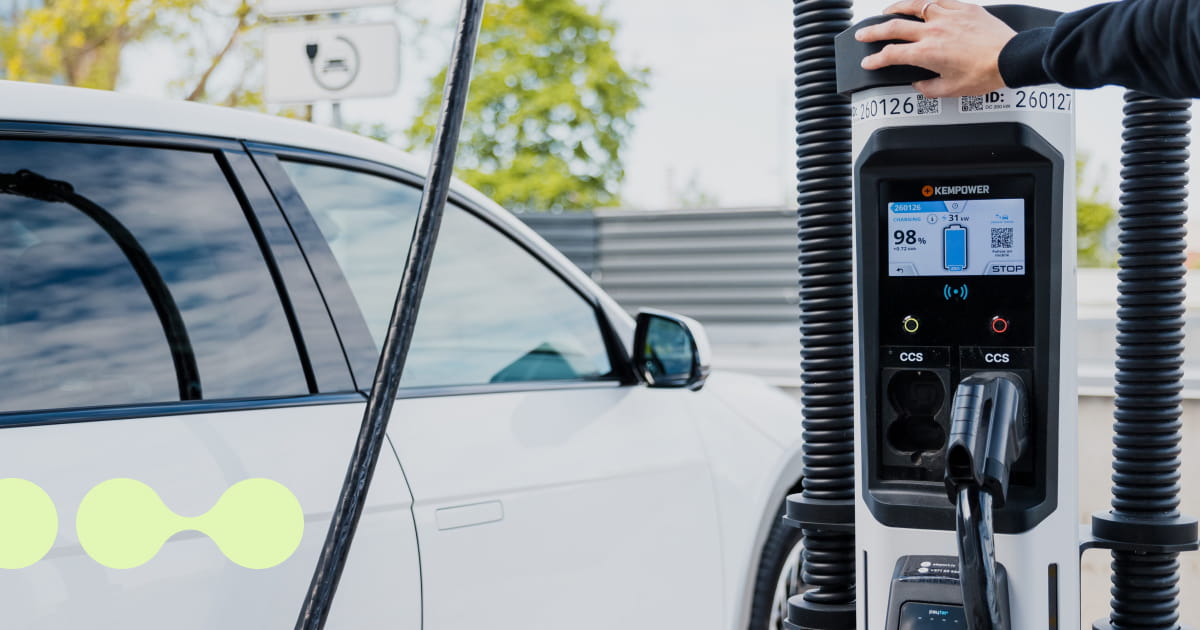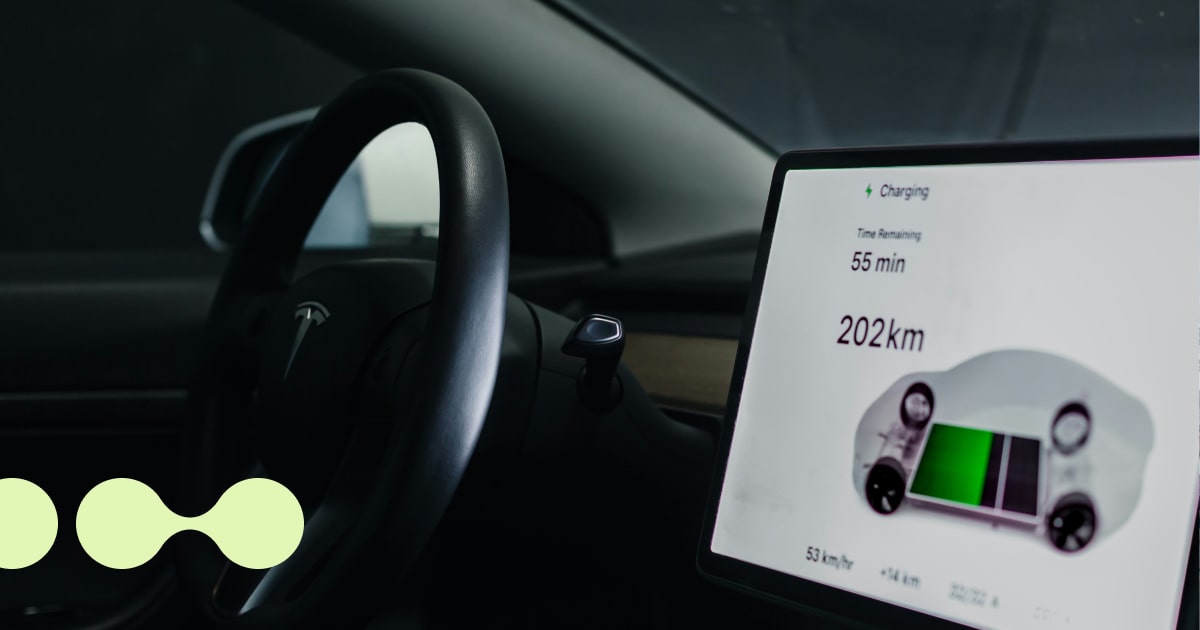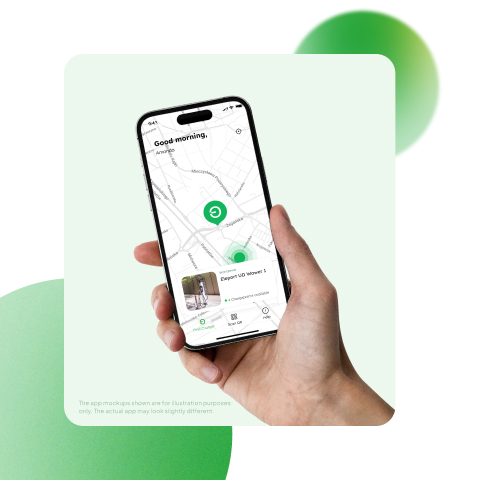Europeans are increasingly turning to EVs for their vehicle purchases. There’s no doubt about this, with every 6th car sold in Europe currently already fully electric.
Now that the EV revolution has been in full swing for years – with the modern EV era starting around 2012 in our region and only increasing since – we are seeing an influx of used EVs on the market, at price points that are becoming really attractive. And the model selection has also increased explosively, from just around five to ten to now reaching 50 to 100 different models to choose from.
Buying used cars has always come with its specific set of potential problems. If you’re considering an EV, you’ll benefit from it having far fewer moving parts that can fail, yet there is one clear point of fear to check and overcome – the battery. Will it last? What if it fails?
Our guide here is not to evangelize the benefits of electric cars – if you’re here, you likely already know how they can offer a superior driving experience in many ways.
Instead, this guide walks you through what to check when buying a used electric car, whether the car fits your life, how to judge battery health, what the mileage and warranty really tell you, and which incentives to look for.
Here’s what to consider when buying a used electric car:
1. Start with understanding your actual needs.

Before looking at range numbers and charging curves, it’s smart to take an honest look at how you actually drive and use your car today.
Take a look at your daily driving pattern and charging options, considering:
- How many kilometres do you usually drive per day (for range needs)
- How often do you take trips over 200 or 300 kilometres (for range needs)
- Where the car will sleep at night and spend the day (for charging needs)
If on most days you are driving under 60 to 80 kilometres and you can charge at home or at work, almost any modern EV will cover your routine comfortably. But don’t get discouraged – even if you drive around 200 kilometres every day, an EV is likely to fit your needs.
The EV’s range becomes more critical in your choice if you drive long motorway distances often, and/or you cannot install a home charger and thus depend heavily on public fast charging.
Next, you should think through charging your potential EV:
- Home: Can you install a wallbox in your driveway or garage?
- Work: Does your workplace offer reliable charging?
- Public: Are there AC and DC chargers on your regular routes, including operators like Eleport in your region?
Knowing this upfront will help you choose the right battery size and charging capability.
Tip: Be wise about the official EV range numbers
The official WLTP range figures, which are always shown on the vehicle spec sheet, ads, and other materials, are useful for comparison between the models, but are always optimistic compared to real-life ranges by default.
Here’s a simple way to estimate real-world range:
- Look up the battery size in kWh (look at net (usable), not gross capacity)
- Assume a realistic consumption figure for your use, for example, 18 to 22 kWh per 100 km for a medium-sized car.
- Divide battery size by that number to get a real range estimate
So a 60 kWh battery at 20 kWh per 100 km gives roughly 300 km in mixed conditions. In winter, in motorway use, you may see something closer to 220 to 250 km. In the cities, EVs get a larger range.
You can also refer to the figures shown on the EV Database site, look for the “Real Range” metric to understand the difference between the WLTP results shown and what you might achieve when actually on the road.
It is important to understand not your max range needs on a perfect day, but rather whether the range of the vehicle also covers your worst days, including some buffer to be sure.
2. The big question: what shape is the battery in?

All EV batteries degrade. There’s no way around it. However, usually the degradation is well predictable and barely an issue until a very high mileage or age of the vehicle.
Fact: EV batteries slowly lose usable capacity over time and usage.
Myth: The battery will suddenly die after a certain time of using it. This is not true. The EV still drives normally throughout its whole lifespan; it is just that a full charge will gradually give less range than when the car was new.
The measurement of the current status of the battery is called the battery State of Health (SoH), which is an estimate of how much capacity remains compared to new, expressed as a percentage.
A moderate drop in capacity, called battery degradation, is normal and to be expected. It is a gradual curve, mostly tied to the age of the battery in years and the usage of the car through charging events.
The goal when buying a used electric car is to avoid a battery pack that has aged unusually fast or has underlying faults. In short, you’ll need to try and avoid hidden faults, which are not common, but can still happen if the seller is dishonest about their car’s performance.
Internet forums also help you determine which EV models are more prone to battery problems, and which are built well and without problems, which further helps you when considering buying a used electric car.
Simple checks you can do for understanding battery condition (SoH)
You can get a first impression without using any special tools if you are able to test drive the car (ideally for longer than just a test lap). After charging the car to 100%, you can explore the range and see if it fits the rough estimates of what the range for this model should be (more on that below).
Tip: Avoid judging based on the estimated range you see on the EV’s dashboard, even at 100%
Why? The automakers, some more than others, are notoriously bad at guessing the correct range with their systems, and this might lead to you over- or underestimating the real range. The shown range can also depend on the previous owners’ driving style, weather conditions, and more.
The best way is to test it on real roads, for as large an extent of the battery as you can.
For a deeper view into SoH, there are a few options:
- Battery report from a dealership. Most brands can provide a battery report through their service network. Tesla and a handful of others can even do it just through their app and the car’s connection. Ask the seller whether such a report exists (no excuse with Teslas, for example) and ask to see it when buying used electric car.
- Independent EV specialist. Some workshops focus on EVs and can run diagnostics on the high-voltage battery. They may be able to give you a more precise SoH value.
- Apps and OBD tools. On certain models, for example, for Nissan LEAFs, third-party apps and a small adapter that you connect to the car can read detailed battery data down to seeing the voltage of each battery cell, and even see exactly how many times the vehicle has been quick charged.
Treat these numbers as one part of the picture, together with age, mileage, and usage history.
When it comes to mileage, electric cars are “aging” similarly to ICE vehicles on the rest of the car, or even end up being a little less risky, thanks to fewer moving parts that can wear out.
When buying used electric car, the usual VIN lookups for accidents should be applied all the same as well.
3. What to ask the seller about the previous use of a used EV

Here are some questions to ask when buying a used electric car, in terms of battery:
- How was the car usually charged?
(AC preferred, DC is okay unless charged often at hot temperatures) - What daily charge limit was used in the car’s settings and charging habits?
(Some battery chemistries degrade less if mostly kept at 20-80%) - Was the car often stored fully charged for long periods?
(Storing at 100% can lead to degradation for some battery chemistries)
- Has the battery ever been repaired or replaced?
(Gives a clear view of what the common fail points would be, not necessarily a bad thing)
- Are there any records of battery-related warning messages
(Any warnings for EV systems may appear and may have been ignored; this would hint at a larger potential problem)
When it comes to charging habits, we’ve written a helpful Eleport guide on “Should I Charge My EV to 100%? Here’s How It Depends on the Battery You Have”, which you can use to reverse engineer if your seller has been caring for the respective battery properly. There is a helpful cheatsheet there as well:

Other questions that you should ask the seller, or find out, are mostly about the regular condition of the car and any previous accidents, just like you would on a regular ICE car. One thing to note if you live in the colder climates of Northern Europe – make sure to check if the EV has a heat pump. If imported from warmer Southern Europe or not installed for whatever reason, the winter range of the car can drop significantly when driving it up north due to the inefficient direct heating.
4. EV warranties: how to check how much protection is left?
One advantage of buying an under 160 000 km driven used EV is that parts of the car may still be under the original warranty, especially the battery, as it is on a separate warranty cycle from the rest of the car.
Most automakers separate their warranty coverage into three layers:
- Battery warranty. This is commonly set to around seven to eight years and a defined kilometre limit, such as 160 000 km. It is usually tied to a promise that capacity will stay above a certain percentage, such as 70 percent. This gives the first owners peace of mind, but might not help when buying a used electric car that much. Details usually vary by brand and country. Do note whether the battery of the EV has been replaced before – this might limit or extend the warranty depending on the case.
- High-voltage system and drivetrain warranty. This can include the motor, inverter and other high-voltage components. Given how electric motors are nearly foolproof, there is less to expect around this
- General vehicle warranty. Covers the rest of the car like with an ICE car, nor relevant only to buying used electric car.
When considering buying used electric car, several years of battery warranty remaining can be a useful safety net. Cars just outside warranty can still be an excellent value, as long as the battery health is clear and the price reflects the risk.
5. Incentives and running costs

The price of a used EV you’re considering is only part of the story. Potential incentives and day-to-day costs can make it a surprisingly competitive option to buy a used electric car.
What type of incentives might there be for buying a used electric cars? Typically, these incentives are either
- Subsidies or bonuses for buying a used EV within certain price or age limits;
- Reduced registration tax, import tax, or annual circulation tax for zero-emission cars
- City benefits such as cheaper parking, access to low-emission zones, reduced congestion charges, or less in road taxes.
If leasing a used EV, you will likely find that different banks offer decreased interest rates for electric vehicles.
So before you commit to the seller, check the latest information on official national or regional websites; you might just win a significant portion of the upfront cost, or even a down payment on the lease.
6. What does a used EV cost to run
This goes more towards buying an electric car in general, rather than just a used one – EVs are just cheaper to run. Here’s how.
Compare what you currently spend on fuel with your ICE vehicle with what you would pay using a realistic mix of home, workplace, and public charging prices. Even with some use of DC fast charging, many drivers see lower energy costs than with petrol or diesel. We’ve created a useful overview of how to calculate EV charging cost here.
In addition to spending less on energy per every kilometre you drive, you don’t have regular oil, exhaust, or timing belt to replace, and fewer wear items in the drivetrain. There is still some oil change that is recommended, mainly for the reducer.
As for maintenance costs, you should still budget for tyres, brakes, suspension, and general checks. Overall, the workshop bills should often prove lower over time.
The regular costs of insurance also apply, which vary per country. Usually, EVs aren’t necessarily more expensive to insure, but can be in some cases, so it’s wise to check ahead of time. In some countries, such as in Estonia, some electric cars also benefit from a reduced rate as the technical pass of the car shows a smaller kW amount than normal (due to how it’s measured), and the insurance rates are partly calculated based on that number.
7. If at all possible, test drive for a longer period

When you are researching how to buy a used electric car, it’s likely you’ll come across both private and dealership sellers, but on both occasions, we recommend doing a longer test drive before buying a used electric car, or a new one alike.
This is because of two reasons: learning the difference between EV and ICE ownership experience firsthand, and comparing the different EV models.
Because honestly, the difference between EV models can be like night and day. Don’t settle until you’ve found the electric car that best fits you.
Should I buy a used electric car?
Is it worth buying a used electric car in the first place? The short answer is – very likely.
A used EV can be a very smart first step into electric driving. You avoid the steepest part of new car depreciation, you still benefit from modern tech, and in many cases, you enjoy remaining battery warranty and much lower running costs.
If you match the car to your real driving pattern, go over our guide to see what to look for when buying a used electric car, check the battery and warranty carefully, and understand how you will charge, you are likely in for a very pleasant experience.
The last piece is to make sure your everyday routes are covered by reliable AC and DC chargers, including networks like Eleport, which is available across 7 countries in the CEE region.
With all that in place, buying a used electric car is now much less of a gamble and more of a well-informed transition away from fossil fuels.



